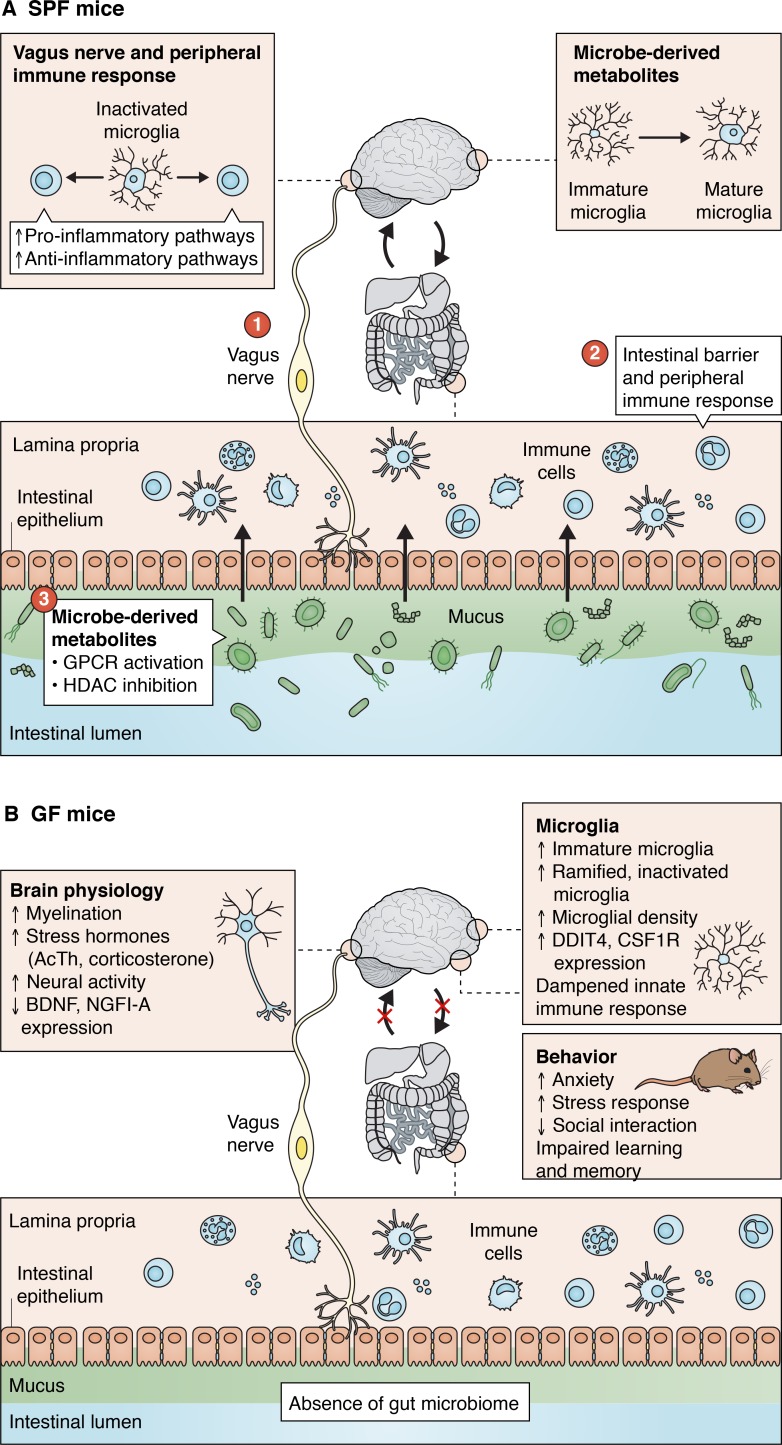Figure 2.
Gut–brain communication pathways. Communication between the gut microbiota and the CNS encompasses several conduits along neural, enteric, and immune pathways. (A) Proper microglial maturation and behavior is dependent on crosstalk along the gut–brain axis. Information about the state of peripheral inflammation and GI health is received in the CNS via vagal afferents that innervate the GI tract and can influence microglial activation and neuroinflammation. Fine-tuning of the intestinal barrier by gut microbiota and their interactions with gut immune cells modulates peripheral inflammation and can trigger downstream inflammatory responses in the CNS. BBB-permeable bacterial metabolites, including SCFAs, modulate microglial maturation through mechanisms that are yet to be determined. (B) The absence of gut microbes in GF mice confers a variety of physiological abnormalities in neural and microglial behavior in the CNS, resulting in heightened anxiety, stress, hyperactivity, and other behavioral symptoms. BDNF, brain-derived neurotrophic factor; HDAC, histone deacetylase.

